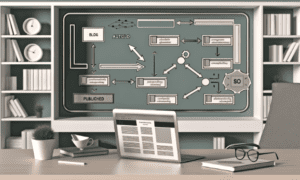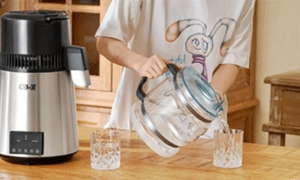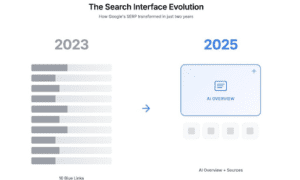In the world of smart financial optimization, few strategies deliver returns quite like sourcing quality used stove parts and affordable appliance repair components. Think of the used stove parts marketplace as the hidden fintech sector of home economics, where savvy consumers leverage cost-efficient purchasing strategies to maximize household budget efficiency. Much like blockchain technology disrupts traditional financial systems, the strategic procurement of used appliance components revolutionizes how forward-thinking households approach capital allocation and resource optimization.
The modern consumer landscape increasingly resembles a complex financial ecosystem where every purchasing decision impacts overall portfolio performance. Smart households are beginning to approach appliance maintenance with the same analytical rigor typically reserved for investment strategies. The secret life of appliance parts reveals cost-saving opportunities that parallel the efficiency gains seen in fintech innovations. Meanwhile, understanding strategic tech spending principles from Harvard Business Review can inform how consumers approach major appliance investments with the same methodical approach used in corporate technology budgeting.
The Economics of Appliance Component Trading
Picture the used appliance parts market as a specialized commodity exchange where depreciation curves create unique value propositions. Unlike traditional retail models that rely on linear pricing structures, the secondary appliance parts ecosystem operates on principles more closely aligned with derivatives trading. Components that have proven their reliability through operational stress testing often outperform their new counterparts, similar to how seasoned algorithms outperform untested financial models.
The correlation between component age and reliability follows fascinating patterns that mirror cryptocurrency volatility charts. Initial depreciation drops values precipitously, but proven performance creates a stability floor that smart buyers exploit. This creates arbitrage opportunities for consumers who understand that a three-year-old oven heating element has essentially completed its beta testing phase while retaining 85% of its operational lifespan.
Consider the stove burner replacement market as a microcosm of supply chain optimization. Original equipment manufacturer parts command premium pricing due to brand positioning, much like how established fintech platforms charge higher fees for perceived security. However, certified refurbished components offer identical functionality at significant discounts, creating value propositions that sophisticated consumers increasingly recognize.
Risk Assessment and Due Diligence Protocols
Successful used parts procurement requires the same analytical framework employed in venture capital deal evaluation. Due diligence involves assessing component provenance, performance history, and warranty structures with methodical precision. Smart buyers develop vendor relationship management strategies that parallel how institutional investors cultivate relationships with fund managers.
The authentication process for quality used stove parts resembles blockchain verification protocols. Each component carries operational history data that skilled technicians can decode, revealing performance patterns and reliability indicators. This information asymmetry creates competitive advantages for buyers who invest time in learning evaluation techniques.
Risk mitigation strategies in the used appliance parts market mirror sophisticated financial hedging approaches. Diversifying suppliers reduces single-point-of-failure risks, while maintaining component inventory creates buffer capacity that prevents costly emergency purchasing at premium prices. The most successful appliance maintenance strategies treat parts procurement as portfolio management rather than reactive purchasing.
Technology Integration and Market Efficiency
Digital platforms have revolutionized used appliance parts trading with the same disruptive force that characterized early fintech innovations. Machine learning algorithms now match buyers with optimal component sources, while predictive analytics forecast failure patterns that enable proactive purchasing strategies. These technological advances compress traditional information gaps that previously favored professional repair services.
The emergence of appliance Internet of Things sensors creates real-time performance data streams that inform replacement timing decisions with unprecedented precision. Smart stoves now generate usage analytics that help predict component lifespan, enabling just-in-time procurement strategies that minimize inventory carrying costs while preventing operational disruptions.
Blockchain applications are beginning to emerge in appliance component authentication, creating immutable service history records that increase buyer confidence in used parts markets. This technological infrastructure development parallels early cryptocurrency adoption patterns, suggesting significant growth potential in digitized appliance maintenance ecosystems.
Financial Optimization Through Strategic Procurement
The most sophisticated consumers approach appliance maintenance with the same optimization mindset that drives successful fintech adoption. Annual maintenance budgets get allocated across preventive component replacement, emergency repair reserves, and strategic upgrade investments. This three-tier approach minimizes total cost of ownership while maximizing appliance performance reliability.
Seasonal pricing patterns in used parts markets create opportunities for strategic purchasing that mirror commodity trading strategies. End-of-year equipment upgrades generate component supply increases that drive temporary price reductions. Savvy buyers time major purchases to exploit these cyclical inefficiencies, achieving 20-30% cost savings through strategic timing.
The subscription economy model is emerging in appliance maintenance services, offering predictable monthly costs that include parts procurement and installation services. These platforms aggregate demand across customer bases to achieve economies of scale in parts purchasing, then pass savings through to consumers. The model resembles software-as-a-service pricing structures that have revolutionized business technology adoption.
Market Intelligence and Competitive Advantages
Information asymmetries create substantial value creation opportunities for educated consumers in used appliance parts markets. Understanding manufacturer production cycles, supplier relationships, and seasonal demand patterns enables strategic purchasing decisions that generate significant cost advantages. Professional repair services possess this market intelligence, but increasingly, individual consumers are developing similar analytical capabilities.
Price discovery mechanisms in used parts markets remain relatively inefficient compared to established financial markets, creating opportunities for skilled negotiators. Unlike standardized commodity pricing, appliance components trade in fragmented markets where local supply-demand imbalances create temporary arbitrage opportunities. Consumers who invest time in market research consistently achieve better pricing outcomes.
The most successful used parts buyers develop systematic evaluation processes that standardize quality assessment across different suppliers and component types. This methodical approach reduces decision-making cognitive load while improving consistency in procurement outcomes. The framework parallels how algorithmic trading systems remove emotional bias from investment decisions.
Platform Economics and Network Effects
Digital marketplaces for used appliance parts exhibit classic network effect characteristics where increased participation benefits all market participants. Larger platforms attract more sellers, improving component availability and competitive pricing for buyers. Simultaneously, increased buyer activity encourages seller participation, creating virtuous cycle dynamics that enhance overall market efficiency.
The emergence of peer-to-peer appliance parts trading platforms resembles early cryptocurrency exchange development patterns. Direct consumer-to-consumer transactions eliminate traditional intermediary markups while creating transparent pricing mechanisms. These platforms typically charge modest transaction fees rather than inflating component costs, improving value propositions for both buyers and sellers.
Quality assurance mechanisms on leading platforms incorporate crowdsourced verification systems where community feedback creates reputation scores for both buyers and sellers. This distributed trust model reduces transaction risks while enabling efficient dispute resolution processes. The approach mirrors how decentralized finance protocols use community governance to maintain system integrity.
Investment Strategy and Portfolio Optimization
Forward-thinking households are beginning to treat appliance maintenance as asset management rather than reactive expense management. Preventive component replacement strategies minimize emergency repair costs while ensuring operational reliability. This proactive approach generates measurable returns on investment through reduced total ownership costs and improved appliance performance consistency.
The most sophisticated maintenance strategies incorporate predictive analytics that forecast component failure patterns based on usage data and manufacturer specifications. These analytical approaches enable optimal replacement timing that maximizes component value extraction while minimizing operational disruption risks. The methodology parallels how institutional investors use quantitative models to optimize portfolio turnover timing.
Strategic parts inventory management creates hedge positions against future price increases and supply disruptions. Consumers who maintain modest component inventories for critical appliances achieve cost savings through bulk purchasing while ensuring repair capability during supply chain disruptions. This approach requires careful balance between inventory carrying costs and supply security benefits.
Future Market Evolution and Technological Disruption
The used appliance parts market stands at an inflection point where technological innovation promises to dramatically improve market efficiency and accessibility. Artificial intelligence applications in component matching and pricing optimization will likely compress current information asymmetries, creating more efficient market clearing mechanisms that benefit both buyers and sellers.
Augmented reality applications are emerging that enable remote component identification and compatibility verification, reducing traditional barriers to used parts adoption. These technological advances will likely accelerate market growth by improving consumer confidence in remote purchasing decisions. The trend parallels how mobile payment technologies eliminated traditional barriers to digital financial services adoption.
The convergence of Internet of Things sensor networks with blockchain authentication systems promises to create unprecedented transparency in appliance component markets. Real-time performance data combined with immutable service histories will enable sophisticated quality assessment capabilities that currently require extensive technical expertise. This technological infrastructure development will likely democratize access to high-quality used components while maintaining appropriate quality standards.
Smart financial optimization increasingly requires understanding opportunities across all household expense categories, and appliance maintenance represents a significant yet often overlooked optimization vector. The strategic procurement of quality used stove parts exemplifies how analytical thinking and systematic approaches can generate substantial value creation opportunities in unexpected market segments.



































